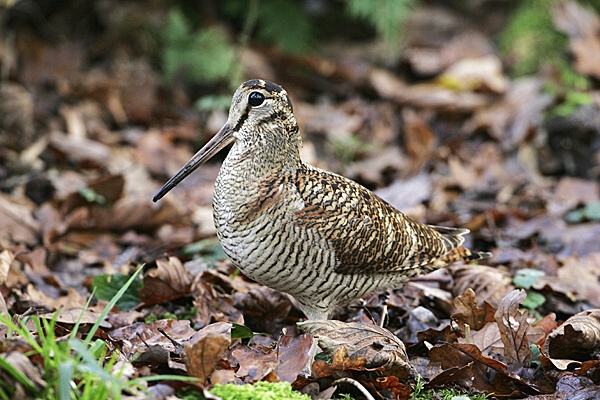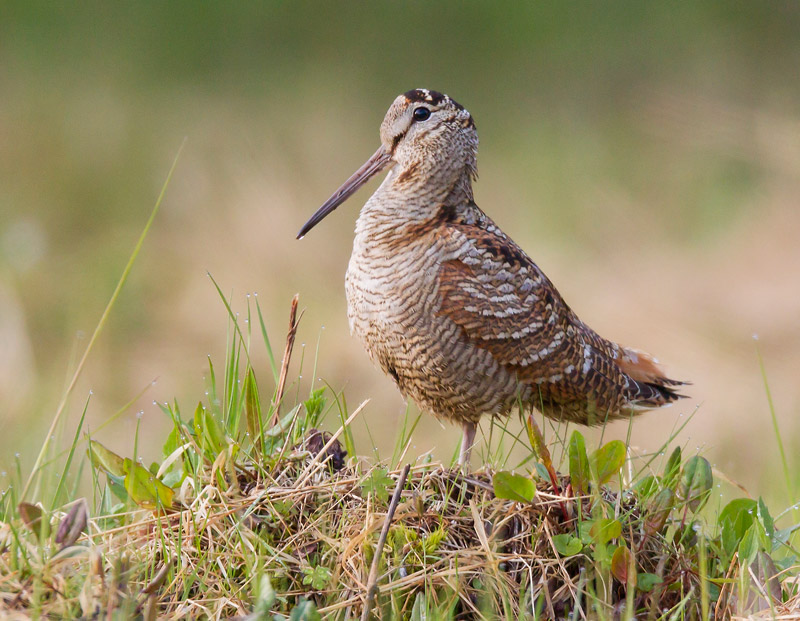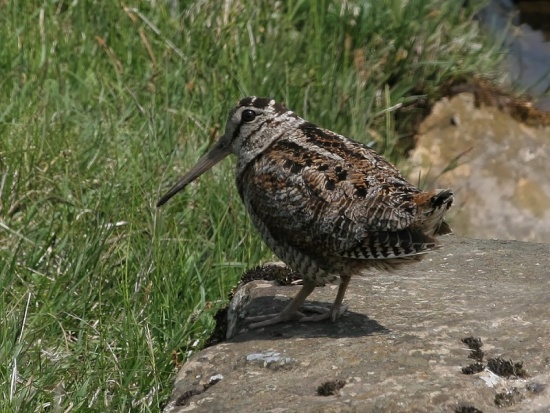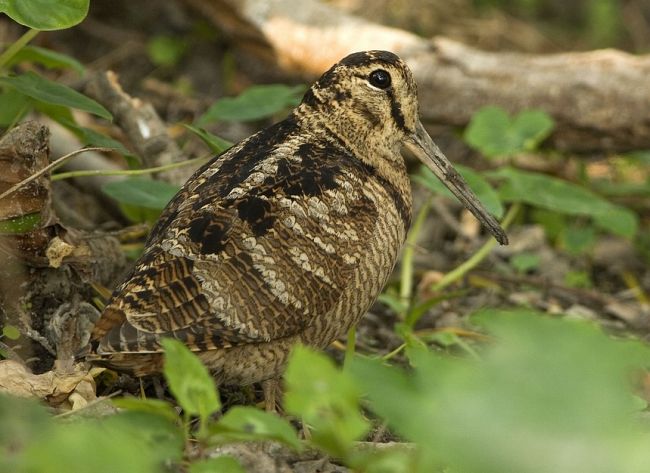
Scolopax rusticola
SUBFAMILY
Scolopacinae
TAXONOMY
Scolopax rusticola Linnaeus, 1758, Sweden. Monotypic.
OTHER COMMON NAMES
French: Bйcasse des bois; German: Waldschnepfe; Spanish:
Chocha Perdiz.
PHYSICAL CHARACTERISTICS
13–13.8 in (33–35 cm); 0.29–0.92 lb (144–420 g). Mainly rufous
brown to reddish above, buffy below. Broad wings. Sexes similar.
DISTRIBUTION
Eastern Atlantic islands, British Isles, north and central Europe,
and central Asia to Sakhalin and Japan. Winters from
Europe and North Africa to Southeast Asia.
HABITAT
Moist forest or woodland with clearings and dense undergrowth.
BEHAVIOR
Solitary. Male has crepuscular “roding” display flight, with
quiet grunting and sharp pietz notes.
FEEDING ECOLOGY AND DIET
Crepuscular or nocturnal feeder, probing moist soil for worms
and insects; also takes food from surface.
REPRODUCTIVE BIOLOGY
Breeds March–July. Polygynous; female cares for eggs and
young. Nests in a shallow depression under shrubs; produces
two to six eggs with incubation in 21–24 days; fledges at 15–20
days.
CONSERVATION STATUS
Not threatened, although some European populations decreasing;
HABITAT
loss is a threat to breeding and wintering birds.
SIGNIFICANCE TO HUMANS
Up to 3.7 million birds killed by hunters per year in Europe.
Photo Gallery of - Eurasian woodcock




 Animalia Life
Animalia Life